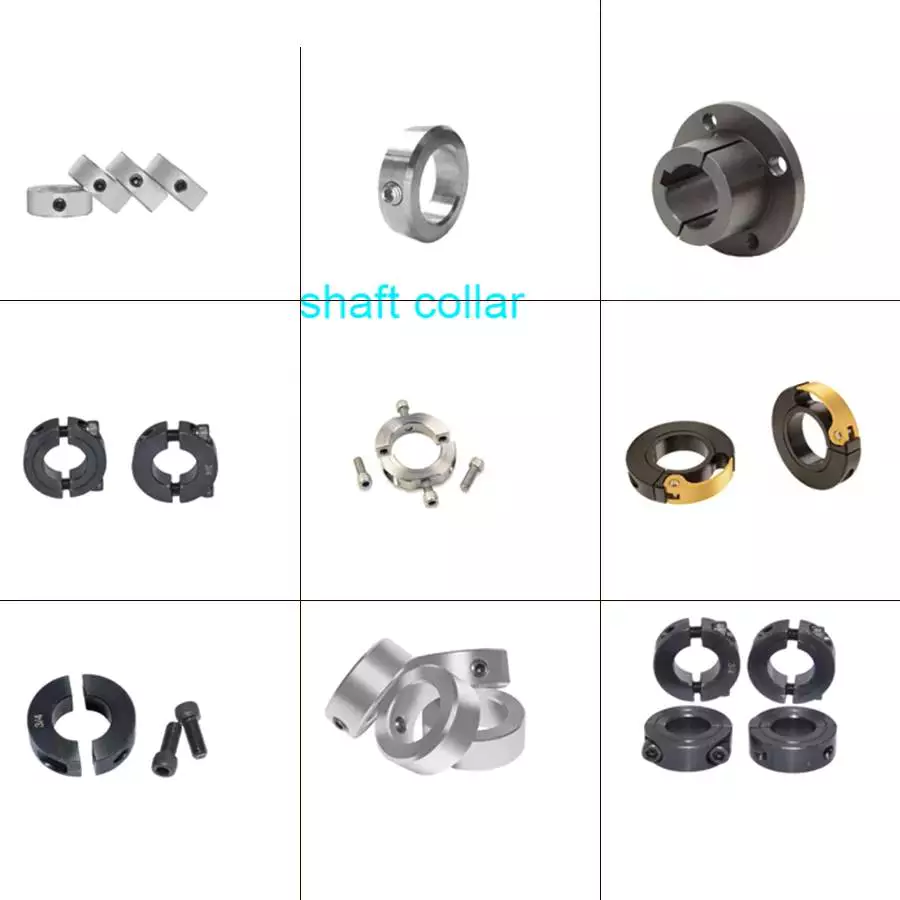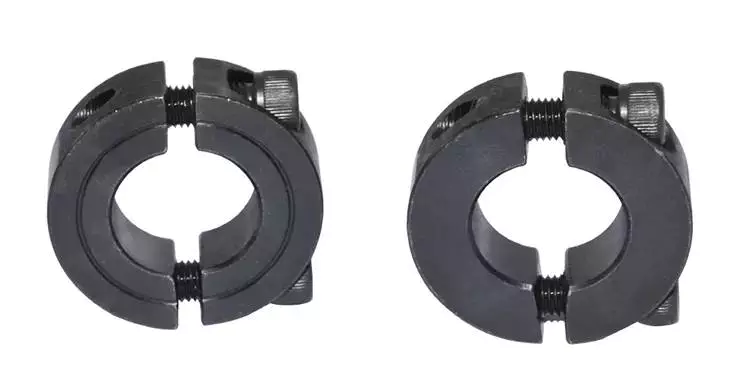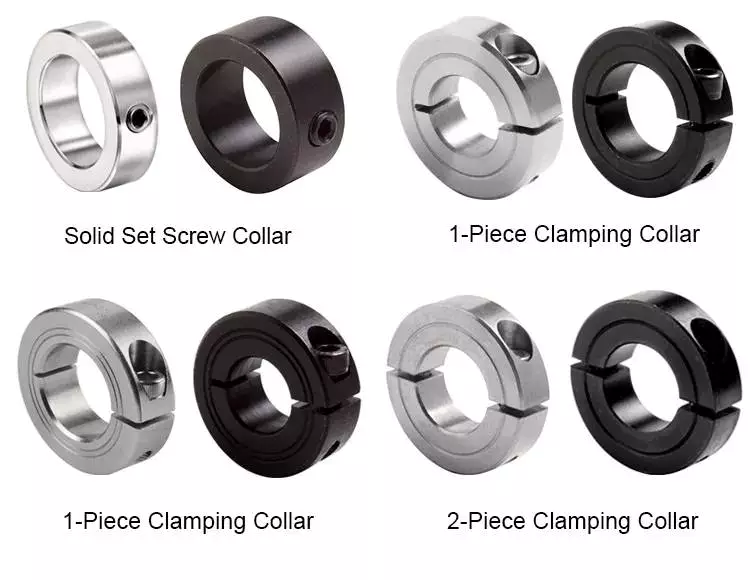Product Description
Product Description
OEM CNC Custom Stainless Steel Brass Aluminium Swivel Shaft Seat Poppet Collar
Product Parameters
| Processing | CNC Machining, CNC Milling and Turning, Drilling, Grinding, Stamping, Tapping, Bending |
| Surface Treatment | Electroplating, Anodizing, Polishing, Chrome Plating, Zinc plating, Nickel plating, Electrophoresis, Sandblasting, Passivation, Powder Coating, Painting, etc. |
| Certifications | ISO9001:2015 IATF16949:2016 |
| Service type | OEM and ODM |
| Tolerance | +/-0.005mm |
| Surface Roughness | Ra0.8 |
| Dimensions | According to Customer’s Drawing |
| Processing Equipments | CNC Machining Center, CNC Milling Machine, CNC Turning Machine, CNC Gantry, Vertical CNC center, Horizantal CNC center, Drilling Machine,Grinding Machine, etc. |
| Testing Equipments | CMM,Laser Precision Detection Projector, Pull Tester, Automatic Optical Inspector, Salt Spray Tester, Durometer, Tensile Machine Calipers |
| Application | Automotive industry, Medical DeviceS, UAV Industry, Communication Electronics Appliance, Robot, Mold Components Processed and Fixrure, Oil, Gas and Other Heavy Equipments. |
| Drawing Format | PDF/JPEG/AI/PSD/CAD/Dwg/Step/LGS |
| MOQ | 1 piece |
| QC Policy | 100% inspection with report, random inspection before shipment, third-party inspections can be provided CZPT request |
| Packaging | PE bags or bubble bags, boxes, cartons, pallet or as per customers’ requirements |
| Trade Terms | EXW, FOB, CIF, As per customers’ request |
| Payment Terms | L/C, T/T, D/P, Western Union, Paypal, Money Gram, etc. |
| Delivery Time | 7-14 working days after deposit payment received for samples,official orders negotiable |
| Production Capacity | 1000000pcs/Months |
Company Profile
Production Line
Equipments List
Certifications
FAQ
1: Are You a Manufacturer?
Yes, we specialize in manufacturing of CNC machining parts over 20 years.
2. When Can I Get the Price?
Quotation will be provid within 24 hours after inquiry is received with full product information and drawing.
3: How Long is Your Delivery Time?
It’s depends on the products requirements ang quantity. Normally the mass order lead time is around 14-20days.
4: How Can You Asure the Quality?
100% inspection and we could provide full inspection reports as customer requests before shipment.
5: Do You Provide Samples ?
Yes, we can provide samples, please provide full product information and drawing.
6: Why Choose Us?
We have advanced technology and equipment, world-class team for techincal and aftersales service. We provide high quality product ,competitive price with fast lead time
/* January 22, 2571 19:08:37 */!function(){function s(e,r){var a,o={};try{e&&e.split(“,”).forEach(function(e,t){e&&(a=e.match(/(.*?):(.*)$/))&&1
| Application: | Auto and Motorcycle Accessory, Hardware Tool, Machinery Accessory |
|---|---|
| Standard: | GB, EN, ASME |
| Surface Treatment: | Electroplating |
| Production Type: | Batch Production |
| Machining Method: | CNC Machining |
| Material: | Steel, Brass, Alloy, Copper, Aluminum, Iron |
| Samples: |
US$ 15/Piece
1 Piece(Min.Order) | |
|---|
| Customization: |
Available
| Customized Request |
|---|
What are the steps for retrofitting machinery with shaft collars for improved performance?
Retrofitting machinery with shaft collars can be a beneficial step to improve performance, enhance functionality, or address specific issues. Here are the general steps involved in retrofitting machinery with shaft collars:
- Assessment and Planning: Start by assessing the machinery and identifying the areas where shaft collars can be installed or upgraded to improve performance. Consider factors such as misalignment, slippage, vibration, or inadequate gripping of rotating shafts. Plan the retrofitting process by determining the number of collars required, their sizes, materials, and any additional components or modifications needed.
- Measurement and Shaft Preparation: Accurate measurement of the shaft diameter is crucial to ensure proper fitting of the collars. Use calipers or other measuring tools to determine the shaft diameter at the desired installation points. Clean the shaft surface and remove any debris or contaminants that may interfere with the collar installation. If necessary, smooth out any rough surfaces or burrs on the shaft to ensure a proper fit.
- Selection and Procurement: Select the appropriate shaft collars based on the specific requirements of your machinery. Consider factors such as shaft diameter, collar style (set screw, clamp, or other), material (steel, stainless steel, aluminum, plastic), and any special features required for improved performance. Procure the necessary shaft collars from a reliable supplier or manufacturer.
- Installation: Follow the manufacturer’s instructions for installing the shaft collars. Generally, the installation involves sliding the collar onto the shaft at the desired location and securing it in place. Set screw collars require tightening the set screws against the shaft to create a tight grip, while clamp-style collars may require tightening bolts or screws to achieve a secure fit. Ensure that the collars are properly aligned and seated on the shaft, and tighten the fasteners to the recommended torque specifications.
- Testing and Adjustment: After installing the shaft collars, conduct thorough testing to ensure their proper functionality and improved performance. Check for any signs of slippage, misalignment, or excessive vibration. If necessary, make adjustments to the collar position, tightness of the fasteners, or other factors to optimize the performance. Repeat the testing and adjustment process as needed until the desired performance improvements are achieved.
- Maintenance and Monitoring: Regularly inspect the shaft collars as part of your machinery maintenance routine. Check for signs of wear, corrosion, or any issues that may affect their performance. Lubricate the collars if required, following the manufacturer’s recommendations. Continuously monitor the performance of the retrofitted machinery to ensure that the shaft collars are functioning as intended and providing the desired improvements.
It is important to note that the specific steps and considerations for retrofitting machinery with shaft collars may vary depending on the type of machinery, the complexity of the retrofit, and other factors specific to your application. Consulting the machinery manufacturer’s guidelines, seeking expert advice, or involving professional technicians can help ensure a successful retrofitting process and optimal performance improvements.
Can I find information on using shaft collars for positioning and securing components?
Yes, you can find a wealth of information on using shaft collars for positioning and securing components. Shaft collars are versatile mechanical devices that are widely used in various industries and applications to provide precise positioning and secure fastening of components on shafts. Here are some sources where you can find valuable information on using shaft collars for positioning and securing components:
- Manufacturer Websites: Many shaft collar manufacturers provide detailed information on their websites about the applications, installation techniques, and benefits of using shaft collars for positioning and securing components. They often offer resources such as product catalogs, technical specifications, installation guides, and case studies that showcase real-world applications. Visiting manufacturer websites can provide valuable insights into the capabilities and best practices associated with shaft collar usage.
- Online Resources and Blogs: There are numerous online resources and blogs dedicated to mechanical engineering, industrial applications, and component usage. These platforms often feature articles, tutorials, and guides that specifically address the topic of using shaft collars for positioning and securing components. Websites of engineering associations, industry publications, and educational institutions can be excellent sources of information in this regard.
- Technical Forums and Discussion Boards: Online technical forums and discussion boards are vibrant communities where professionals and enthusiasts share their knowledge and experiences. Participating in these forums or browsing through relevant threads can provide valuable insights and practical tips on using shaft collars for positioning and securing components. Users often discuss specific applications, troubleshooting techniques, and innovative use cases, offering a rich source of information.
- Engineering Books and Publications: Engineering books and publications covering topics such as mechanical design, machine elements, or industrial automation often include sections or chapters dedicated to shaft collars and their applications. These resources provide in-depth explanations, theoretical foundations, and practical examples of using shaft collars for positioning and securing components. Libraries, online bookstores, and academic institutions are good places to access these resources.
- Professional Networking: Engaging with professionals in the field, such as mechanical engineers, designers, or maintenance technicians, can provide valuable insights into the practical aspects of using shaft collars for positioning and securing components. Participating in industry conferences, seminars, or workshops, or connecting with professionals through social media platforms like LinkedIn, can facilitate knowledge sharing and discussions on best practices and real-world applications.
By exploring these sources, you can acquire a comprehensive understanding of the principles, techniques, and considerations involved in using shaft collars for positioning and securing components. It is important to consult multiple sources and consider the specific requirements of your application to ensure the most effective and reliable use of shaft collars in your projects.
What is a shaft collar and its role in mechanical systems?
A shaft collar is a mechanical component used in various applications to provide support, positioning, and locking functions for rotating shafts. It is a cylindrical device that fits around a shaft and is typically secured in place using set screws or clamping mechanisms. The collar is designed to prevent axial movement of the shaft and maintain its position within a mechanical system. Here is a detailed explanation of the role and significance of shaft collars in mechanical systems:
Support and Positioning:
One of the primary roles of a shaft collar is to provide support and positioning for a shaft within a mechanical system. It acts as a physical barrier that prevents the shaft from moving along its axial direction. By securing the collar at a specific location along the shaft, it helps maintain the desired position of the shaft relative to other components, such as bearings, gears, or pulleys. This support and positioning function ensures proper alignment and operation of the system, preventing unwanted vibrations, misalignment, or excessive wear.
Axial Load Distribution:
Shaft collars also help distribute axial loads along the length of the shaft. When a mechanical system experiences axial forces or thrust, the collar can help transmit and distribute these forces to the supporting components, such as bearings or thrust washers. By evenly distributing the load, shaft collars help prevent localized stress concentrations and improve the overall load-bearing capacity of the system.
Limiting Radial Movement:
In addition to preventing axial movement, shaft collars can also limit radial movement of the shaft within a given range. The collar’s design and tight fit around the shaft create a mechanical barrier that restricts radial play or shifting of the shaft. This is particularly important in applications where precise positioning or clearance control is required, such as in linear motion systems, conveyor systems, or machinery with rotating components.
Securing Components:
Shaft collars often serve as a means of securing other components onto the shaft. They can act as a stopping point or reference surface against which other elements, such as bearings, sprockets, gears, or pulleys, can be mounted. By securing these components with set screws or clamping mechanisms, shaft collars ensure their proper alignment and prevent unintentional movement or disengagement during operation.
Adjustability and Easy Installation:
Another advantage of shaft collars is their adjustability and ease of installation. They can be easily positioned and moved along the shaft without requiring complex tools or specialized equipment. This adjustability allows for fine-tuning of the shaft’s position and alignment within the system. Additionally, the simplicity of their design and installation makes shaft collars a cost-effective solution for various mechanical applications.
Overall, shaft collars play a significant role in mechanical systems by providing support, positioning, load distribution, and component securing functions. Their presence helps ensure the stability, alignment, and efficient operation of rotating shafts in diverse applications across industries such as manufacturing, automation, robotics, and machinery.
editor by CX 2024-04-10




